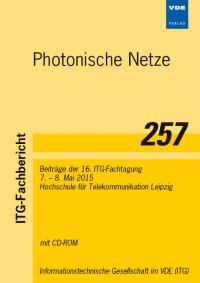Functional and Structural Convergence of Fixed/Mobile Access Networks
Conference: Photonische Netze - 16. ITG-Fachtagung
05/07/2015 - 05/08/2015 at Leipzig, Deutschland
Proceedings: Photonische Netze
Pages: 5Language: englishTyp: PDF
Personal VDE Members are entitled to a 10% discount on this title
Authors:
Pachnicke, S. (ADVA Optical Networking SE, Maerzenquelle 1-3, 98617 Meiningen, Germany)
Magee, A.; Turnbull, P. (ADVA Optical Networking SE, ADVAntage House, Tribune Way, York, YO30 4RY, United Kingdom)
Grobe, K.; Elbers, J.-P. (ADVA Optical Networking SE, Fraunhoferstr. 9a, 82152 Martinsried, Germany)
Abstract:
Fixed-mobile network convergence (FMC) requires new concepts on both the structural and functional levels. A key aspect is a next generation point of presence (POP) containing a universal access gateway (UAG). The UAG allows aggregating carrier Ethernet signals, SDN-controlled protocol- and bitrate agnostic switching and the implementation of various virtualized functions (network function virtualization, NFV). FMC can be subdivided into structural convergence (regarding the infrastructure) and functional convergence (regarding the necessary functionalities required in fixed and mobile networks). In this article concepts for structural convergence are explained, which allow transport of Ethernet-, mobile (fronthaul-/backhaul-) and WiFi-traffic over a unified infrastructure. Furthermore, important functions are introduced, which can be provided by the NFV server inside of a UAG in the context of functional convergence of both fixed and mobile networks.


